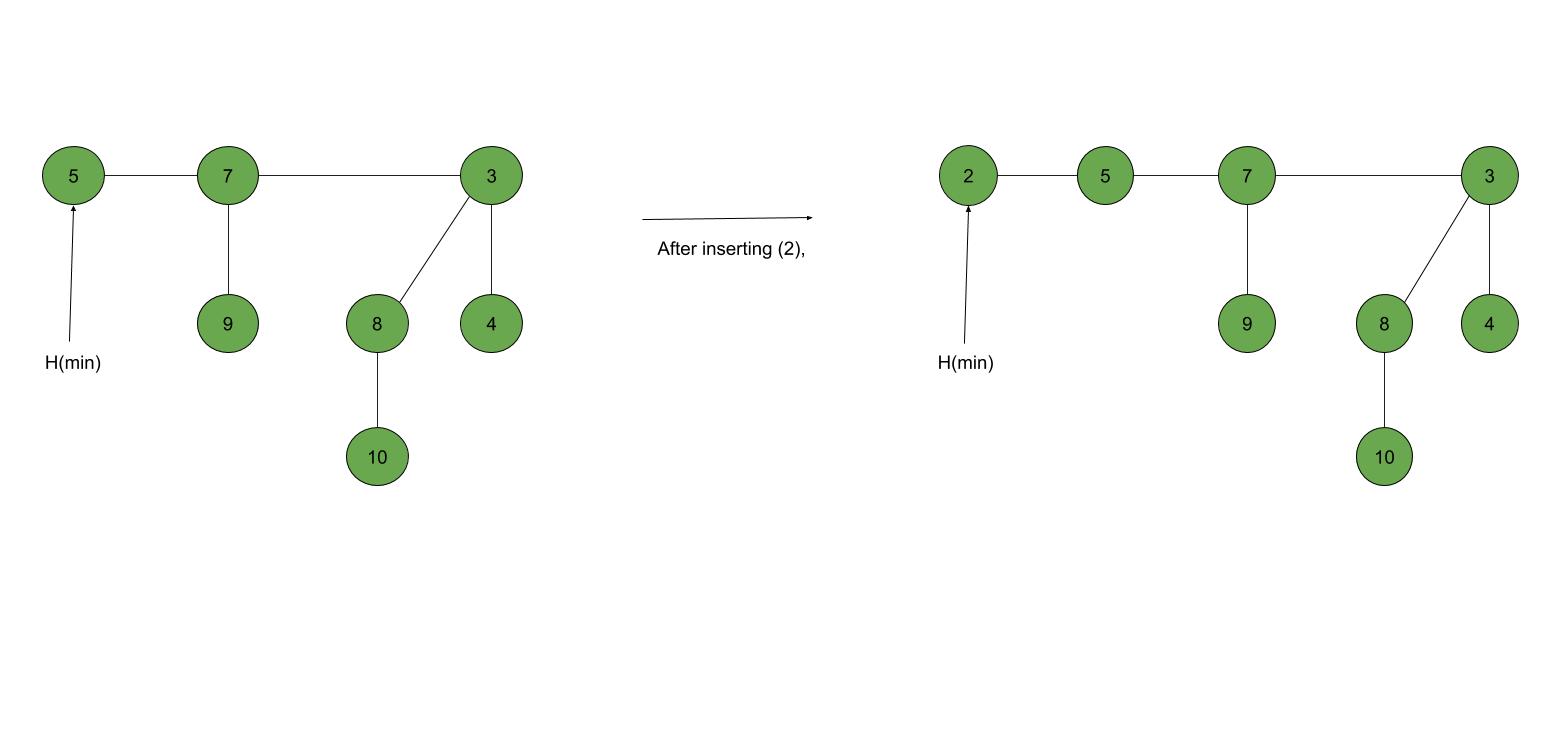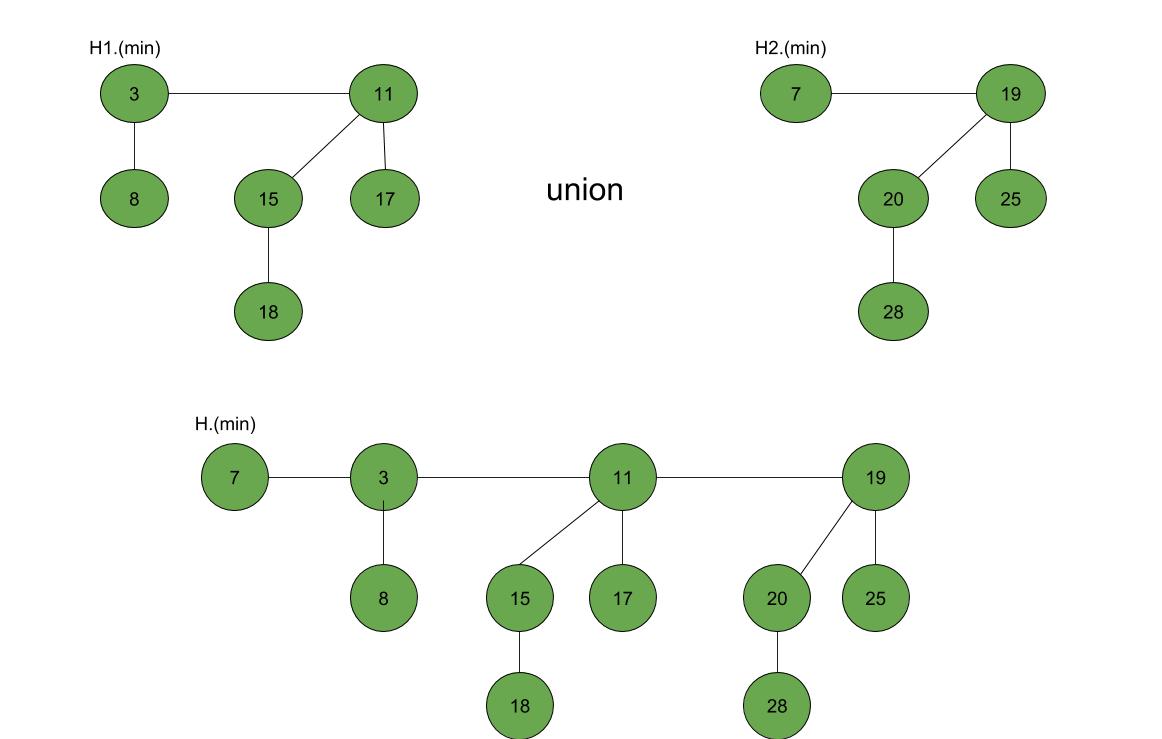先决条件:斐波那契堆(简介)
斐波那契堆是具有最小堆或最大堆属性的树的集合。在斐波那契堆中, 即使所有树都可以是单个节点, 树木也可以具有任何形状(这与二项式堆不同, 后者每棵树都必须是二项式树)。
在本文中, 我们将讨论斐波那契堆上的插入和联合操作。
插入:要将节点插入斐波那契堆H中, 请遵循以下算法:
创建一个新节点"x"。
检查堆H是否为空。
如果H为空, 则:使x为根列表中的唯一节点。并将H(min)指针设置为x。
否则:将x插入根列表并更新H(min)。
例子:

联合:两个斐波纳契堆H1和H2的并集可以按以下方式完成:
将Fibonacci堆的H1和H2的根列表联接起来, 并制作单个Fibonacci堆H。
如果H1(min)<H2(min), 则:H(min)= H1(min)。
否则:H(min)= H2(min)。
例子:

以下是演示在斐波那契堆中进行构建和插入的程序:
// C++ program to demonstrate building
// and inserting in a Fibonacci heap
#include <cstdlib>
#include <iostream>
#include <malloc.h>
using namespace std;
struct node {
node* parent;
node* child;
node* left;
node* right;
int key;
};
// Creating min pointer as "mini"
struct node* mini = NULL;
// Declare an integer for number of nodes in the heap
int no_of_nodes = 0;
// Function to insert a node in heap
void insertion( int val)
{
struct node* new_node = ( struct node*) malloc ( sizeof ( struct node));
new_node->key = val;
new_node->parent = NULL;
new_node->child = NULL;
new_node->left = new_node;
new_node->right = new_node;
if (mini != NULL) {
(mini->left)->right = new_node;
new_node->right = mini;
new_node->left = mini->left;
mini->left = new_node;
if (new_node->key < mini->key)
mini = new_node;
}
else {
mini = new_node;
}
}
// Function to display the heap
void display( struct node* mini)
{
node* ptr = mini;
if (ptr == NULL)
cout << "The Heap is Empty" << endl;
else {
cout << "The root nodes of Heap are: " << endl;
do {
cout << ptr->key;
ptr = ptr->right;
if (ptr != mini) {
cout << "-->" ;
}
} while (ptr != mini && ptr->right != NULL);
cout << endl
<< "The heap has " << no_of_nodes << " nodes" << endl;
}
}
// Function to find min node in the heap
void find_min( struct node* mini)
{
cout << "min of heap is: " << mini->key << endl;
}
// Driver code
int main()
{
no_of_nodes = 7;
insertion(4);
insertion(3);
insertion(7);
insertion(5);
insertion(2);
insertion(1);
insertion(10);
display(mini);
find_min(mini);
return 0;
}输出如下:
The root nodes of Heap are:
1-->2-->3-->4-->7-->5-->10
The heap has 7 nodes
Min of heap is: 1
![从字法上最小长度N的排列,使得对于正好为K个索引,a[i] a[i]+1](https://www.lsbin.com/wp-content/themes/begin%20lts/img/loading.png)